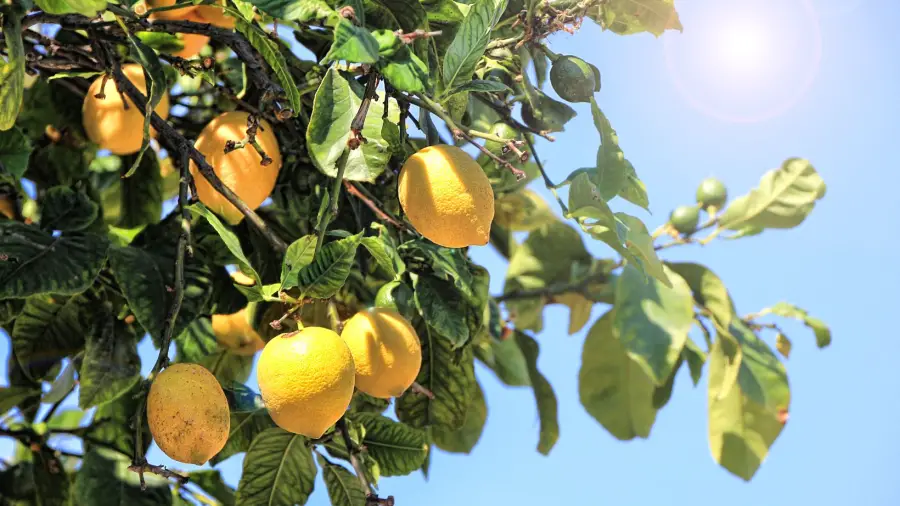Welcome to the ultimate guide on creating a bountiful lemon plantation at home! Whether you’re a seasoned gardener or a first-timer, cultivating your own lemon trees is a rewarding and satisfying experience. Not only will you have access to fresh, juicy lemons for various culinary delights, but the lush green lemon trees will also add beauty and fragrance to your backyard. In this comprehensive DIY guide, we’ll walk you through everything you need to know to successfully grow and maintain a flourishing lemon plantation right in your backyard.

Table of Contents
- Lemons Galore: The Ultimate DIY Guide to Creating a Bountiful Lemon Plantation at Home!
- Frequently Asked Questions (FAQs)
- Conclusion
Lemons Galore: The Ultimate DIY Guide to Creating a Bountiful Lemon Plantation at Home!
In this section, we’ll dive into the core aspects of creating your own bountiful lemon plantation. From choosing the right lemon tree variety to preparing the soil and nurturing your trees, we’ve got you covered!
1. Selecting the Perfect Lemon Tree Variety
To start your lemon plantation, the first and most crucial step is choosing the right lemon tree variety. There are several types of lemons, each with unique characteristics. Some popular lemon varieties include Eureka, Lisbon, Meyer, and Ponderosa. Consider factors such as climate, space availability, and your preferences in taste and fruit size when making your selection.
2. Finding the Ideal Location
Lemons thrive in sunny, well-drained locations, so choose a spot in your backyard that receives full sunlight for at least 8 hours a day. Avoid areas with waterlogged soil or excessive shade, as these conditions can hinder the growth of your lemon trees.
3. Preparing the Soil for Plantation
The success of your lemon plantation greatly depends on the quality of the soil. Lemons prefer slightly acidic soil with a pH range of 5.5 to 6.5. Conduct a soil test to determine its pH level and amend it with organic matter if necessary. Ensure good drainage to prevent waterlogging.
4. Planting Your Lemon Trees
Once you have selected the right location and prepared the soil, it’s time to plant your lemon trees. For a Lemons Galore plantation, dig a hole that is twice as wide and deep as the root ball of the tree. Carefully remove the lemon tree from its container, position it in the hole, and backfill with soil. Water thoroughly after planting.
5. Providing Proper Care and Maintenance
Like any other plant, lemon trees need care and attention to thrive. Regular watering, fertilizing, and pruning are essential for healthy growth and fruit production. Use organic fertilizers and follow a consistent watering schedule to ensure optimal growth.
6. Protecting Your Lemon Trees from Pests and Diseases
Pests and diseases can pose a threat to your lemon trees. Keep a close eye on your trees for any signs of infestations or diseases. Use natural remedies or organic pesticides to protect your lemon trees while minimizing harm to the environment.
7. Harvesting Juicy Lemons
The most rewarding part of your lemon plantation journey is harvesting ripe, juicy lemons! In a Lemons Galore plantation, the ripening time of lemons can vary depending on the variety and may take several months. Wait until the lemons are fully yellow and slightly soft to the touch before harvesting. Use pruning shears to gently remove the fruit from the tree.
8. Preserving and Using Lemons
With a bountiful lemon harvest, you’ll have plenty of lemons to use in various culinary delights. From making lemonade to baking lemon-infused desserts, the possibilities are endless. Additionally, learn how to preserve lemons for later use by freezing or dehydrating them.

Frequently Asked Questions (FAQs)
Can I grow lemon trees in pots?
Yes, you can grow lemon trees in pots if you have limited space or live in colder regions. Choose a dwarf lemon variety, use well-draining potting mix, and ensure the pot receives sufficient sunlight.
How often should I water my lemon trees?
Water your lemon trees deeply once a week during the growing season. For a Lemons Galore plantation, make adjustments to the watering frequency based on weather conditions and the moisture level of the soil.
For a Lemons Galore plantation, what is the ideal time to plant lemon trees?
The best time to plant lemon trees is in spring or early summer when the soil is warm and the risk of frost has passed.
In a Lemons Galore plantation, how much time does it take for lemons to ripen on the tree?
Lemons can take anywhere from 4 to 12 months to ripen, depending on the variety and growing conditions.
How do I know if my lemon tree is getting enough nutrients?
Signs of nutrient deficiency in lemon trees include yellowing leaves, stunted growth, and reduced fruit production. Conduct a soil test to identify any nutrient deficiencies and adjust your fertilization accordingly.
Can I use lemon seeds to grow my lemon trees?
While it is possible to grow lemon trees from seeds, keep in mind that the resulting tree may not produce the same quality of fruit as the parent tree. It’s best to use grafted lemon trees for consistent fruit production.
Conclusion
Congratulations! You’ve now learned how to create a bountiful lemon plantation at home like a pro. By following the steps in this ultimate DIY guide, you’ll be able to grow healthy lemon trees and enjoy a plentiful harvest of delicious lemons. Remember to provide proper care and maintenance to your lemon trees, and they will reward you with juicy fruits for years to come. So, roll up your sleeves, get your gardening tools ready, and let Lemons Galore: The Ultimate DIY Guide to Creating a Bountiful Lemon Plantation at Home be your companion on this exciting journey!
